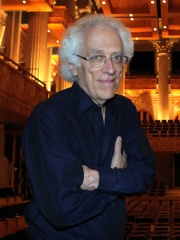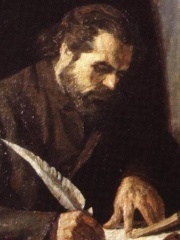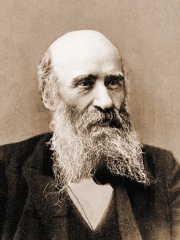


The Most Famous
HISTORIANS from Bulgaria
This page contains a list of the greatest Bulgarian Historians. The pantheon dataset contains 561 Historians, 3 of which were born in Bulgaria. This makes Bulgaria the birth place of the 30th most number of Historians behind Georgia, and Armenia.
Top 3
The following people are considered by Pantheon to be the most legendary Bulgarian Historians of all time. This list of famous Bulgarian Historians is sorted by HPI (Historical Popularity Index), a metric that aggregates information on a biography's online popularity.

1. Tzvetan Todorov (1939 - 2017)
With an HPI of 70.42, Tzvetan Todorov is the most famous Bulgarian Historian. His biography has been translated into 37 different languages on wikipedia.
Tzvetan Todorov (; French: [tsvetan tɔdɔʁɔv, dzve-]; Bulgarian: Цветан Тодоров; 1 March 1939 – 7 February 2017) was a Bulgarian-French historian, philosopher, structuralist literary critic, sociologist and essayist. He was the author of many books and essays, which have had a significant influence in anthropology, sociology, semiotics, literary theory, intellectual history and culture theory.

2. Paisius of Hilendar (1722 - 1773)
With an HPI of 64.53, Paisius of Hilendar is the 2nd most famous Bulgarian Historian. His biography has been translated into 25 different languages.
Saint Paisius of Hilendar or Paìsiy Hilendàrski (Bulgarian: Свети Паисий Хилендарски) (1722–1773) was a Bulgarian Orthodox clergyman and a key Bulgarian National Revival figure. He is most famous for being the author of Istoriya Slavyanobolgarskaya (1762), the first significant modern Bulgarian history that became famous and has been copied and distributed everywhere in the Bulgarian lands. The book is, overall, the third modern work of Bulgarian history, after the works titled "History of Bulgaria" by Petar Bogdan Bakshev in 1667 and by Blasius Kleiner in 1761. He is considered the forefather of the Bulgarian National Revival. Paisius was born in the Samokov eparchy of the time. There is a scientific dispute about the exact place of his birth, although the prevailing consensus points to the town of Bansko. He established himself in the Hilandar monastery in 1745, where he was later a hieromonk and deputy-abbot. Collecting materials for two years through hard work and even visiting the Habsburg monarchy, he finished his Istoriya Slavyanobolgarskaya in 1762 in the Zograf Monastery. The book was the first attempt to write a complete history of Bulgaria and attempted to awaken and strengthen Bulgarian national consciousnesses. The most famous part of the whole book is the paragraph:"Oh, you unwise moron! Why are you ashamed to call yourself a Bulgarian and why don't you read and speak in your native language? Weren't Bulgarians powerful and glorious once? Didn't they take taxes from strong Romans and wise Greeks? Out of all the Slavic nations they were the bravest one. Our rulers were the first ones to call themselves emperors, the first ones to have patriarchs, the first ones to baptise their people.(...) Why are you ashamed of your great history and your great language and why do you leave it to turn yourselves into Greeks? Why do you think they are any better than you? Well, here you're right because did you see a Greek leave his country and ancestry like you do?" This more or less signifies the purpose of the author who speaks about the danger of Bulgarians falling victim to the Hellenization policies of the mainly Greek clergy. The book's first manual copy was done by Sophronius of Vratsa in 1765. Structurally, Istoriya Slavyanobolgarskaya consists of two introductions, several chapters that discuss various historic events, a chapter about the "Slavic teachers", the disciples of Cyril and Methodius, a chapter about the Bulgarian saints, and an epilogue. As Paisius toured Bulgaria as a mendicant friar, he brought his work, which was copied and spread among the Bulgarians. He is thought to have died on the way to Mount Athos near Ampelino (modern-day Asenovgrad).

3. Marin Drinov (1838 - 1906)
With an HPI of 59.30, Marin Drinov is the 3rd most famous Bulgarian Historian. His biography has been translated into 24 different languages.
Marin Stoyanov Drinov (Bulgarian: Марин Стоянов Дринов, Russian: Марин Степанович Дринов; 20 October 1838 – 13 March 1906) was a Bulgarian historian and philologist from the National Revival period who lived and worked in Russia through most of his life. He was one of the originators of Bulgarian historiography. Drinov was a founding member of the Bulgarian Academy of Sciences (then the Bulgarian Literary Society), as well as its first chairman.
People
Pantheon has 3 people classified as Bulgarian historians born between 1722 and 1939. Of these 3, none of them are still alive today. The most famous deceased Bulgarian historians include Tzvetan Todorov, Paisius of Hilendar, and Marin Drinov.
Deceased Bulgarian Historians
Go to all RankingsTzvetan Todorov
1939 - 2017
HPI: 70.42
Paisius of Hilendar
1722 - 1773
HPI: 64.53
Marin Drinov
1838 - 1906
HPI: 59.30
Overlapping Lives
Which Historians were alive at the same time? This visualization shows the lifespans of the 3 most globally memorable Historians since 1700.

